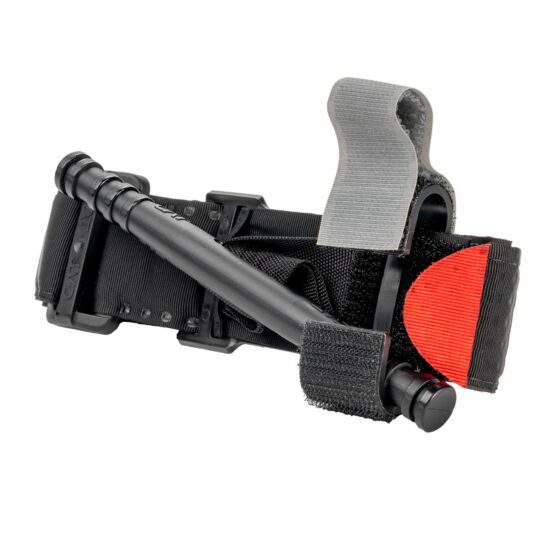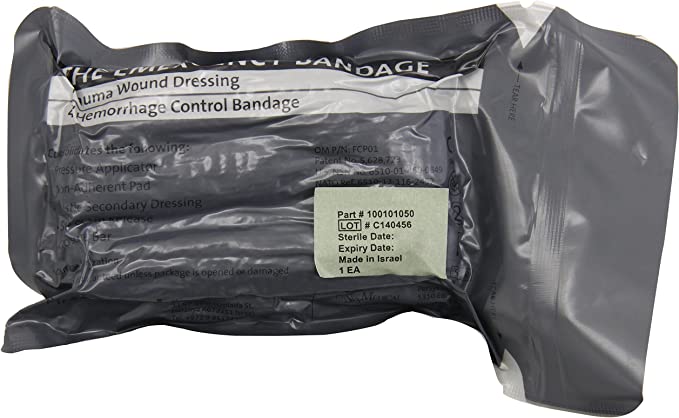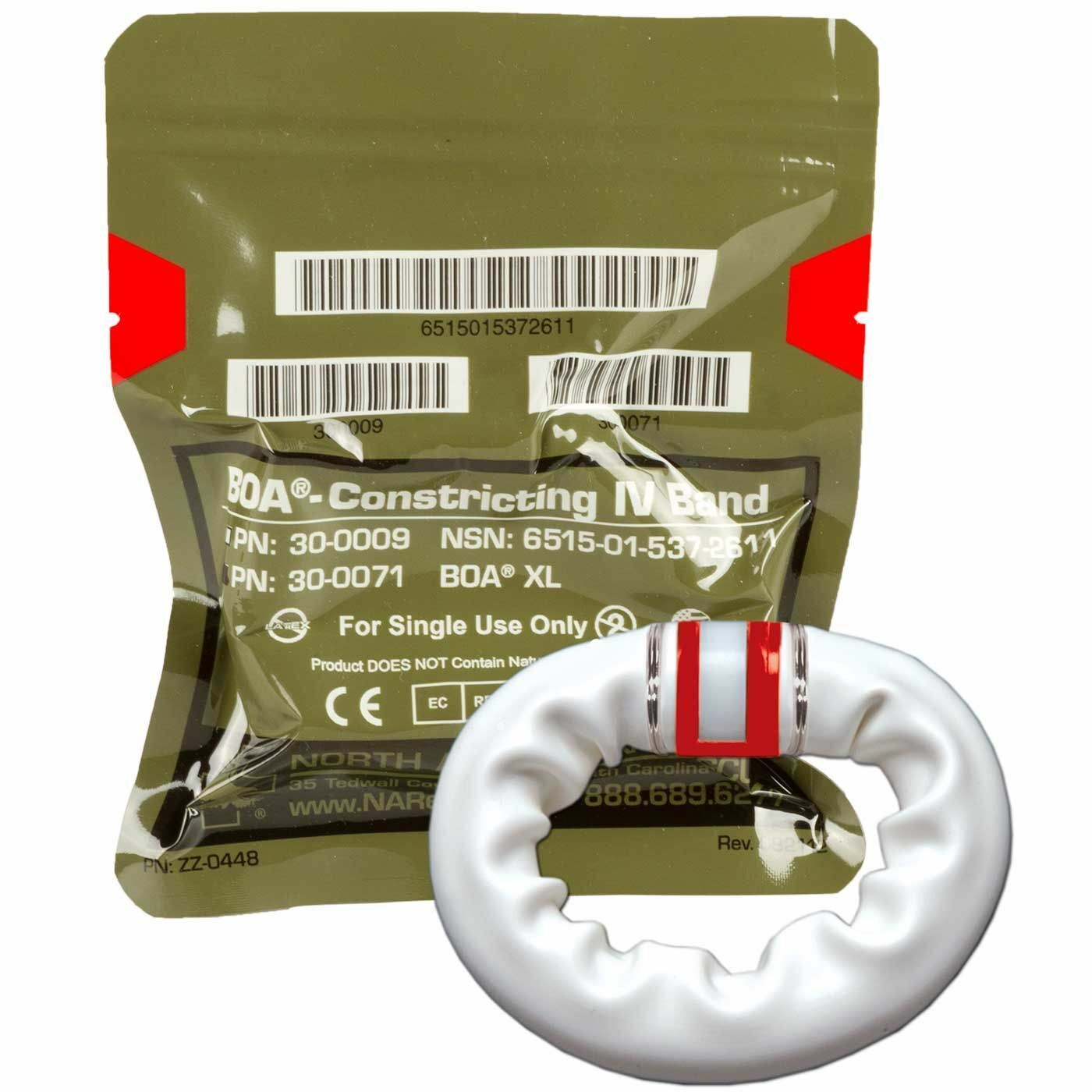Massive bleeding: how to recognise and what to do
Content
- How to detect bleeding on the battlefield
- Causes of massive bleeding on the battlefield
- Types of external bleeding
- Action algorithms for different types of bleeding
- First aid for capillary bleeding
- First aid for venous bleeding
- First aid for arterial bleeding
- First aid for bleeding with tourniquet application
- First aid for internal bleeding
- Possible consequences of massive bleeding
- Rehabilitation and recovery
- Conclusion
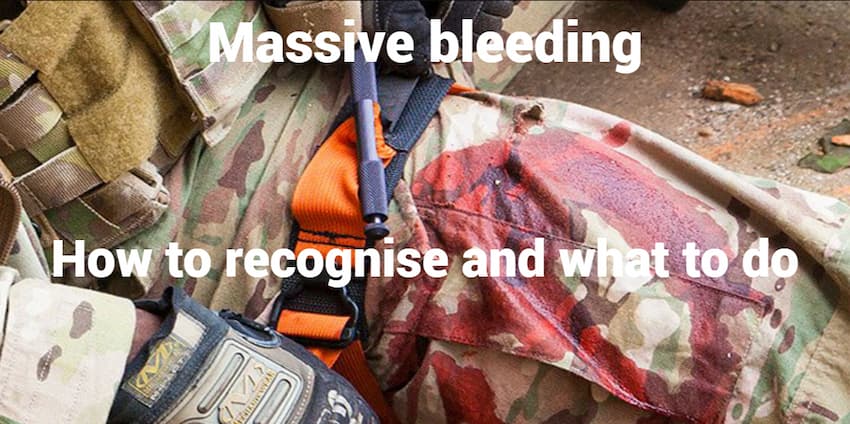
Massive bleeding is a critical condition that threatens a person's life and requires an immediate response. To save the victim, it is important not to get confused and to know exactly what needs to be done before the medics arrive.
After all, the speed and correctness of actions determine whether a person can return to a full life. At the same time, mankind has not always understood how the circulatory system functions, how dangerous a significant blood loss is, and how to stop it properly.
In this article, we will look at how approaches to the study of bleeding have changed over time, how to learn how to recognise it correctly, and what first aid measures are considered the most effective today.
How to detect bleeding on the battlefield
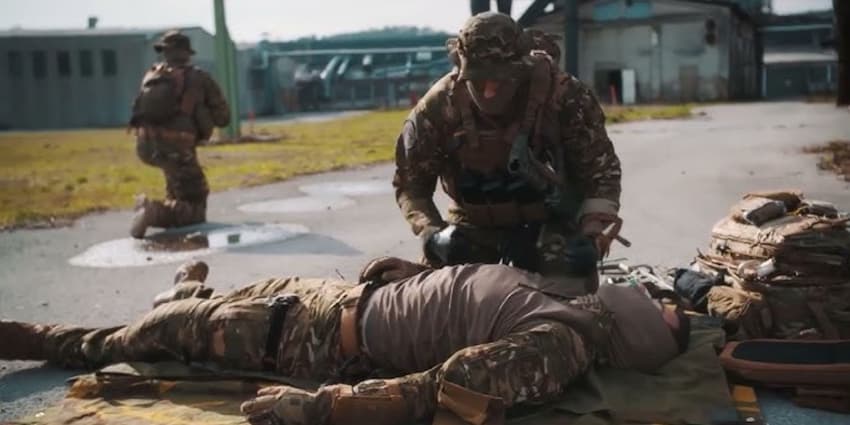
Bleeding is the leakage of blood from damaged blood vessels that occurs as a result of injury or trauma. On the battlefield, the rapid determination of its location is extremely important, as the life of a wounded soldier depends on the efficiency of actions.
Follow these steps to identify the bleeding area correctly and quickly:
- Examine the victim visually: look for blood on clothing or equipment. The area of greatest blood saturation usually indicates the area of injury.
- Check the critical areas: be sure to examine the neck, groin, armpits, limbs, abdomen, chest and back, as injuries to these areas often cause the most severe blood loss.
- Assess the casualty's skin and consciousness: pale skin, clammy cold sweat, dizziness or loss of consciousness can indicate significant occult blood loss even when blood is not visible on the surface of clothing or equipment.
Remember that bleeding is not always obvious. In some cases, blood may accumulate under clothing or equipment, making it difficult to detect quickly. Be especially careful when checking a casualty in low visibility conditions, such as during the hours of darkness, or when it is impossible to remove body armour or other equipment.
In addition to visual inspection and checking critical areas, you should also regularly check the pulse of the injured person and observe the dynamics of his or her condition. A sudden deterioration in the general condition of a soldier almost always indicates an active latent bleeding that needs to be stopped immediately.
A quick and systematic examination allows you to detect serious blood loss and start providing assistance in time to save the life of the wounded.
Causes of massive bleeding on the battlefield
Massive bleeding on the battlefield occurs mainly as a result of serious traumatic injuries accompanied by rupture or significant damage to large vessels or internal organs. Typically, such bleeding is caused by gunshot wounds, which are characterised by a large depth of penetration of the bullet or fragments, as well as significant internal tissue and vascular damage.
Mine-blast injuries often cause blood loss, leading to amputation of limbs or severe soft tissue damage. Shrapnel wounds are also dangerous, as numerous small fragments can simultaneously damage several vessels and create multiple sources of bleeding.
A separate danger is posed by knife and stab wounds, which are typical of close combat and can affect large vessels in the neck, groin or axillae. Such wounds, despite their small external size, often cause rapid and significant blood loss, which can be life-threatening.
In addition, it is important to understand that massive bleeding can result not only from obvious limb injuries or superficial wounds, but also from hidden internal injuries of the chest and abdomen. This is an acceleration of large vessels, liver, spleen or other internal organs that may not be immediately noticeable, but quickly lead to a critical condition due to internal blood loss.
The causes of massive bleeding on the battlefield can be very diverse, but all of them require the fastest possible detection and immediate action to stop the bleeding and save the life of the soldier.
Types of external bleeding
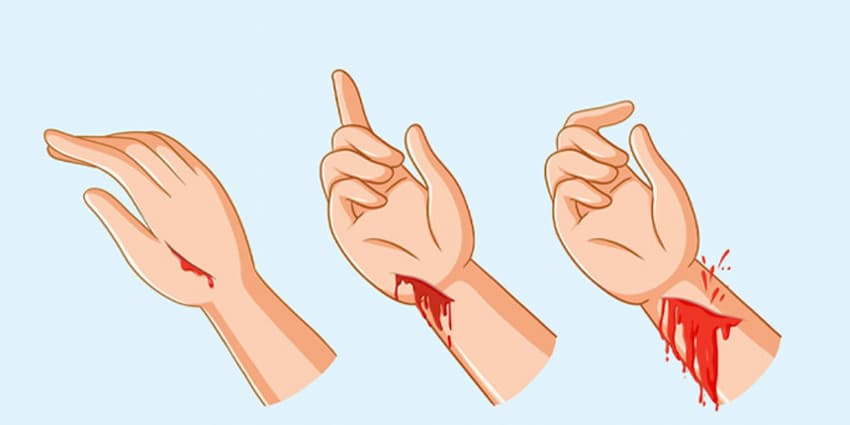
External bleeding is a condition in which blood flows from damaged blood vessels outside the body and we can observe it directly. Depending on which vessels are damaged, external bleeding has its own characteristic signs, which allows it to be quickly recognised and effectively stopped.
Arterial bleeding is the most dangerous type of bleeding, as it occurs due to damage to the arteries, the vessels that carry oxygenated blood from the heart to the organs. It is characterised by intensity and rapidity: the blood is bright red in colour and flows out of the wound in gushing jolts that match the heartbeat. Without a quick and correct reaction, such bleeding can lead to critical blood loss in a matter of minutes.
Venous bleeding occurs when the veins, the vessels that return blood to the heart, are damaged. Such blood has a dark red or burgundy colour, it is thicker and flows evenly, without pronounced pulsation. Venous bleeding is less intense than arterial bleeding, but it is also dangerous due to significant blood loss and the risk of complications, such as air embolism or blood clots.
Capillary bleeding is the most common and least dangerous type of bleeding, which occurs as a result of damage to small surface vessels (capillaries). This bleeding is minor, the blood slowly oozes out in droplets (‘dewdrops’) and can be easily stopped by simply pressing the wound or applying a bandage. Although capillary bleeding rarely leads to significant blood loss, it can be dangerous for people with clotting disorders.
Regardless of the type of bleeding, it is important to remember that in real life conditions (especially in combat) it can be difficult to distinguish between arterial and venous bleeding. Several types of blood vessels are often damaged simultaneously during an injury (combined bleeding), so the colour and nature of the blood flow is not always a reliable criterion. In addition, in conditions of poor visibility, through clothing or under severe stress, it is difficult to accurately determine the type of damaged vessels.
Therefore, the primary task of a first responder is to stop bleeding quickly and effectively, regardless of its type, focusing primarily on the amount of blood and the rate of blood loss.
For your convenience and quick orientation, here is a comparative table:
| Type of Bleeding | Characteristic Signs |
|---|---|
| Arterial | Bright red blood, flows out in strong pulsating spurts ("fountain-like") |
| Venous | Dark red or burgundy blood, flows evenly without pulsation, possible clot formation |
| Capillary | Slow oozing of blood in the form of droplets ("bloody dew") from superficial wounds |
This information will help you quickly navigate a critical situation and prioritise first aid.
Action algorithms for different types of bleeding
Proper first aid for bleeding means acting quickly, clearly and confidently. However, the algorithm of actions depends on the type of bleeding and its intensity. A key guideline in critical bleeding care is the M.A.R.C.H. algorithm, which is used in tactical medicine and systemises actions by priority.
The life and health of the victim depends on how effectively and timely these steps are performed. In this section, we will look at how to act in different situations in order not to get confused and to stop blood loss as quickly as possible before the arrival of medics.
First aid for capillary bleeding
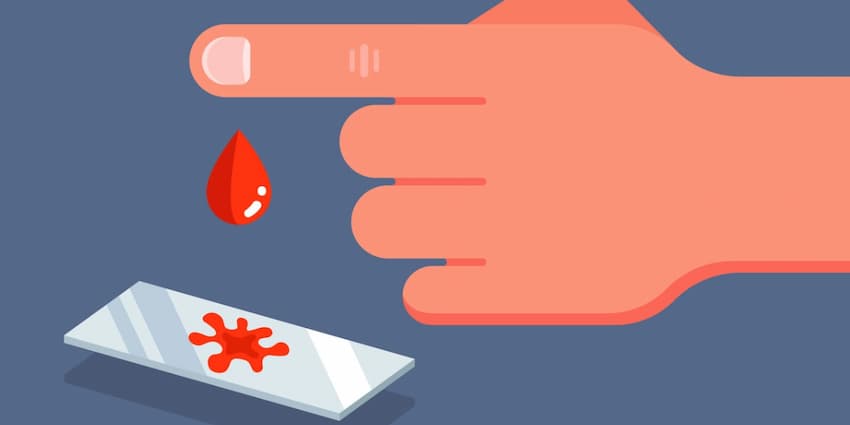
Although capillary bleeding is the least dangerous type of external bleeding, it also requires careful attention to avoid wound infection. To stop it, you must first thoroughly treat the wound edges with an antiseptic solution, such as hydrogen peroxide, brilliant green or iodine. This will help prevent infection and speed up healing.
After the edges have been treated, a clean gauze dressing should be applied to the wound, preceded by a layer of sterile cotton wool to avoid irritation of the damaged tissue and provide additional protection against bacteria. The bandage should not be too tight, but tight enough to stop the slow oozing of blood.
If the area of skin damage is large or the bleeding does not stop for a long time, it is imperative to seek medical attention to avoid complications.
First aid for venous bleeding
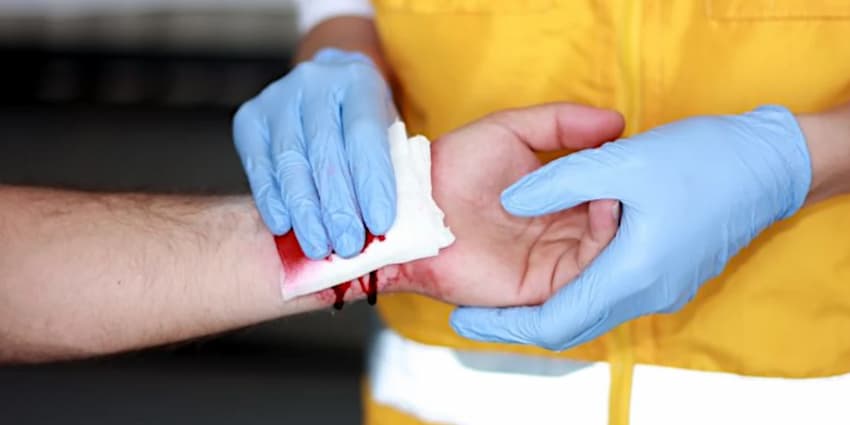
In the case of venous bleeding, it is important to act with utmost care, as incorrect actions can lead to significant blood loss. First of all, it should be remembered that blood clots formed in the wound must never be removed, as this can increase bleeding.
The most effective and easiest way to stop venous bleeding is to apply a tight aseptic bandage made of a strong bandage or clean cloth, creating sufficient pressure on the injury. If this method does not work and blood continues to flow, a tourniquet tourniquet should be applied.
Before applying it, be sure to place a soft material, such as cotton wool or cloth, to avoid additional damage to the skin. It is important to record the time of tourniquet application by writing it down on a note attached next to or directly on the tourniquet.
The duration of tourniquet use depends on the season: in the cold season (autumn-winter), the maximum allowable time of tourniquet use is up to 1 hour, in the warm season (spring-summer) - up to 2 hours. Exceeding this time can cause tissue damage and subsequent necrosis.
In a situation where a special tourniquet is not available, it is allowed to use improvised means, such as tight belts, belts, ties or rolled towels with a stick or other strong object for fixation. After providing first aid, the victim should be taken to a medical facility as soon as possible.
First aid for arterial bleeding
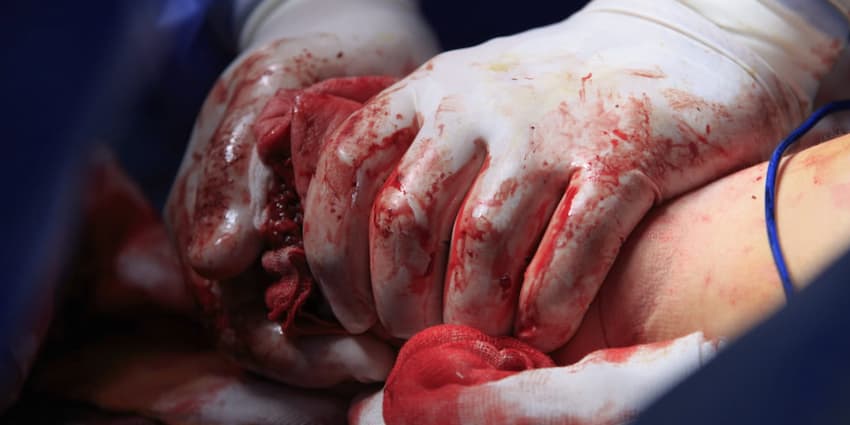
First aid for arterial bleeding requires the fastest, most confident and precise actions. After all, this type of bleeding is considered the most dangerous due to the high rate of blood loss.
First, you need to make sure that there are no fractures or other serious injuries to the limb. Next, the injured limb should be elevated to reduce the blood flow to the wound. After that, apply a clean, sterile cloth or tissue to the wound and press it firmly against the wound to temporarily slow the bleeding.
If blood continues to flow, apply a pressure dressing. If this method does not stop the bleeding, apply a tourniquet or tissue wrap above the injury as soon as possible, recording the time of application. The tourniquet time is the same as for venous bleeding: up to 1 hour in the cold season and up to 2 hours in the warm season.
In the absence of a tourniquet or tourniquet, it is allowed to press the artery with a finger at the point of pulsation above the injury site. In case of damage to large arteries such as the brachial, femoral, popliteal or elbow, it is effective to fix the limb in a maximally bent and elevated position until the arrival of medical personnel.
After first aid, the victim should be immediately taken to a medical facility, as the first minutes after the injury are crucial in the case of arterial bleeding.
First aid for bleeding with tourniquet application

Tourniquet application is a last resort, yet very effective method of stopping severe bleeding, which is used only when other methods, such as a pressure bandage or a cloth wrap, fail.
The tourniquet allows you to completely stop blood circulation in the injured limb, but it is important to remember that its use can lead to damage to tissues and nerve endings, so this method should be used only when absolutely necessary.
The main indications for tourniquet application are massive arterial or venous bleeding that cannot be stopped by simpler means, as well as traumatic amputation of a limb or situations where it is difficult to quickly determine the location of the injury.
When applying a tourniquet, it is important to follow the following rules:
- The tourniquet should be applied above the wound, as close to the wound as possible, on exposed skin or over loose clothing.
- A soft material (cloth, bandage) must be placed under the tourniquet to reduce the risk of skin injury.
- It is imperative to record the exact time of tourniquet application (write it down on paper attached to the clothing or tourniquet), as the duration of its use is limited: in the warm season (spring-summer) - up to 2 hours, in the cold season (autumn-winter) - up to 1 hour.
- The victim should be taken to a hospital as soon as possible for further medical care and tourniquet removal in a safe environment.
Remember that although tourniquet application is an effective method of emergency care, it should be used only in critical situations when the victim's life directly depends on stopping the bleeding.
First aid for internal bleeding
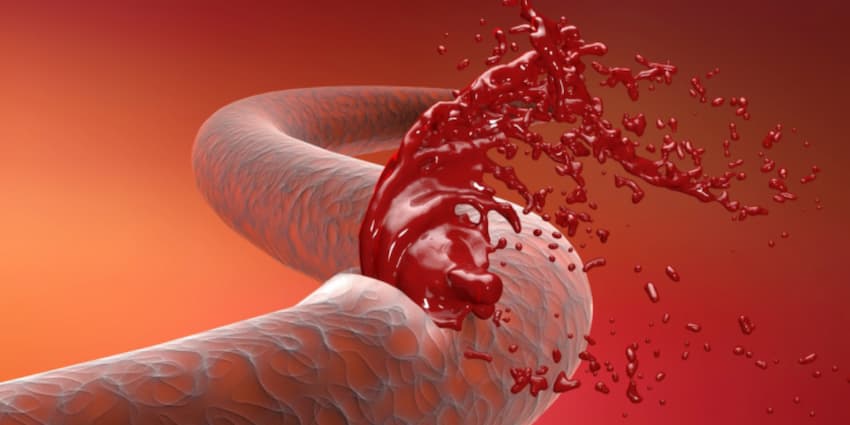
Internal bleeding is one of the most difficult to recognise because the blood flows inside the body rather than outside, making it difficult to diagnose. Nevertheless, there are characteristic symptoms that make it possible to suspect this condition. These include severe weakness, dizziness, cold clammy sweat, pale skin, a thready pulse, shallow breathing, and sometimes even loss of consciousness.
If internal bleeding is suspected, the first step is to call for medical help immediately. While the medics are on their way, the victim should be placed in a semi-sitting position, ensuring maximum rest. A cold compress or an ice pack wrapped in a cloth should be applied to the area where the source of bleeding is likely to be located (chest, abdomen). This will partially slow down the blood loss by narrowing the damaged vessels and help to avoid a rapid deterioration of the victim's condition.
It is worth remembering that any internal bleeding is a potentially life-threatening condition, so the sooner the victim receives professional medical care, the greater the chances of a successful recovery.
Possible consequences of massive bleeding
Massive bleeding is an extremely dangerous condition that can cause serious and often irreversible consequences for the human body. The main danger is critical blood loss, which quickly leads to acute circulatory disorders and oxygen deprivation of all organs and tissues.
One of the most serious complications of massive blood loss is haemorrhagic (blood loss) shock. It is accompanied by a sharp drop in blood pressure, weakness, impaired consciousness, and in the absence of an ambulance, can lead to the victim's death.
Other possible consequences include damage to internal organs due to prolonged oxygen deprivation. The brain, heart, kidneys, and liver are particularly sensitive to insufficient blood supply. As a result, severe complications can develop in the form of renal or liver failure, ischaemic damage to the heart or brain.
In addition, massive bleeding, even if it is stopped, often leads to blood clotting disorders, which can cause internal bleeding in hospital. Victims also face the risk of serious infectious complications, as open wounds create conditions for bacteria to enter the bloodstream.
It is important to remember that in case of massive bleeding, the speed and quality of first aid is crucial. Correct and timely actions significantly reduce the risk of serious complications and help save lives.
Rehabilitation and recovery
The process of recovery from massive bleeding is long and requires a comprehensive approach. The loss of a significant amount of blood has a serious impact on the general condition of the body, so you need to recover gradually, under the supervision of medical specialists.
One of the main stages of rehabilitation is to restore normal levels of haemoglobin and red blood cells in the blood. For this purpose, the patient may be prescribed blood transfusions or blood products (red blood cells, plasma). At the same time, iron supplements, B vitamins, folic acid are prescribed to speed up the process of blood composition restoration.
Particular attention should be paid to nutrition, as a proper diet accelerates recovery and strengthens the immune system. The diet should include foods rich in protein (meat, fish, eggs), iron (liver, pomegranates, buckwheat, legumes), as well as vegetables and fruits rich in vitamins that promote tissue regeneration.
Physical activity after massive bleeding should be dosed. At the initial stage, short walks, breathing exercises and simple movements to maintain muscle tone are recommended. Gradually, the load can be increased, but only with the consent of the doctor.
Psychological support is also an important aspect of rehabilitation. People who have experienced massive blood loss may experience anxiety, insomnia, and fear of a repeat situation. In such cases, the help of a psychologist or psychotherapist will be effective in helping them cope with emotional experiences and adapt to normal life.
An integrated approach to rehabilitation, careful attention to the recommendations of doctors and a gradual increase in physical activity allow you to fully recover from massive bleeding and return to a full life.
Conclusion
Massive bleeding is one of the most dangerous threats to life that anyone can face, especially in combat situations. Its cunning is that death can occur in just a few minutes, and only a quick, correct and decisive action can save a person. That is why it is important to be able to recognise the signs of bleeding, understand its type and know a clear algorithm for providing assistance - both for external and internal injuries.
Remember: at the stage of first aid, it is not necessary to accurately classify the type of bleeding - the main thing is to stop the blood flow in time and stabilise the victim's condition before the arrival of medics. Even the simplest actions, performed confidently and competently, can be crucial.
Knowledge saves lives. And practice and training make the reaction automatic - this is how the ability to act effectively when seconds count is formed.
